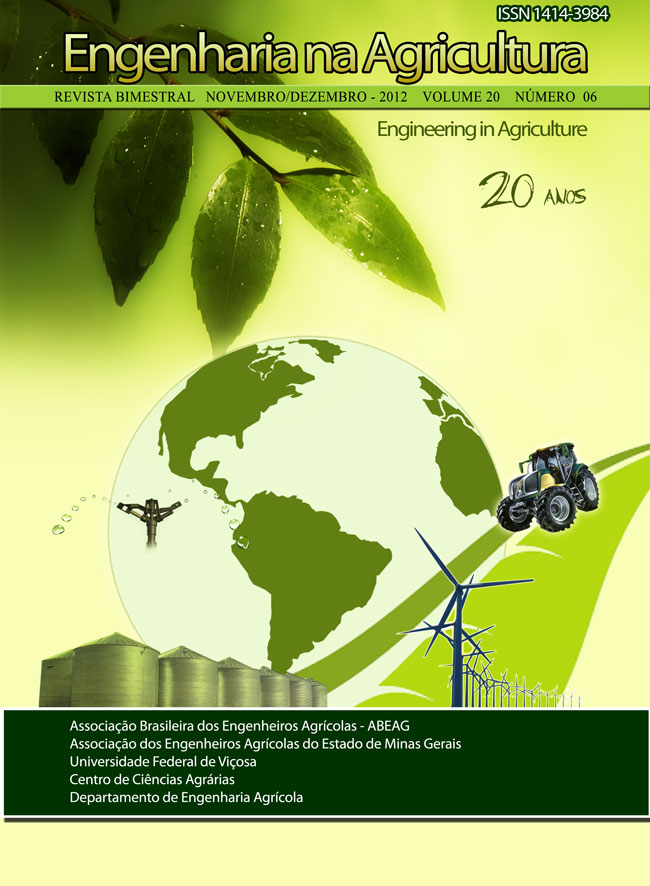LOSSES IN THE CUTTING DECK OF A COMBINED GRAIN HARV ASTER DURING THE SOYBEAN HARVEST
DOI:
https://doi.org/10.13083/reveng.v20i6.378Keywords:
mecanização, colheita mecanizada e velocidade operacionalAbstract
Soybean (Glycine max) is one of the most cultivated species in Brazil, with important socioeconomic role and estimated production for the 2011/12 crop of 66.7 million tons. Among the losses in the harvesting process, those caused by the cutting mechanism of the harvester are significant, representing about 85% of total losses during mechanical harvesting. This work was carried out to evaluate the losses in cutting deck on different operating configurations. The study was conducted at the Santa Rosa farm, located in the municipality of Morrinhos-GO, in an area of 58 ha irrigated by center pivot which was sowed variety of IGRA 516 RR. As a source of evaluation of the study, we used a harvester John Deere brand, model 1450. The experiment was conducted in a randomized block design in a 2x3 factorial, with two operating speeds and three rotations of the reel and seven repetitions, totaling 42 experimental units. The results show that losses in cutting deck were significant due to the interaction of the factors studied. The best results were obtained when it was used 30 rpm rotation of the reel and 5 km h-1 for forward speed, totaling losses between 25,8 and 54,6 kg ha-1.Downloads
Downloads
Published
How to Cite
Issue
Section
License
Authors who publish with this journal agree to the following terms:
The author(s) authorize(s) the publication of the text in the journal;
The author(s) ensure(s) that the contribution is original and unpublished and that it is not in the process of evaluation by another journal;
The journal is not responsible for the views, ideas and concepts presented in articles, and these are the sole responsibility of the author(s);
The publishers reserve the right to make textual adjustments and adapt texts to meet with publication standards.
From submission, the author is fully conceding the paper's patrimonial rights to the publication, but retaining the owner of its moral rights (authorship and paper's identification) according to Creative Commons Attribution-Noncommercial.








 Licensed by
Licensed by 